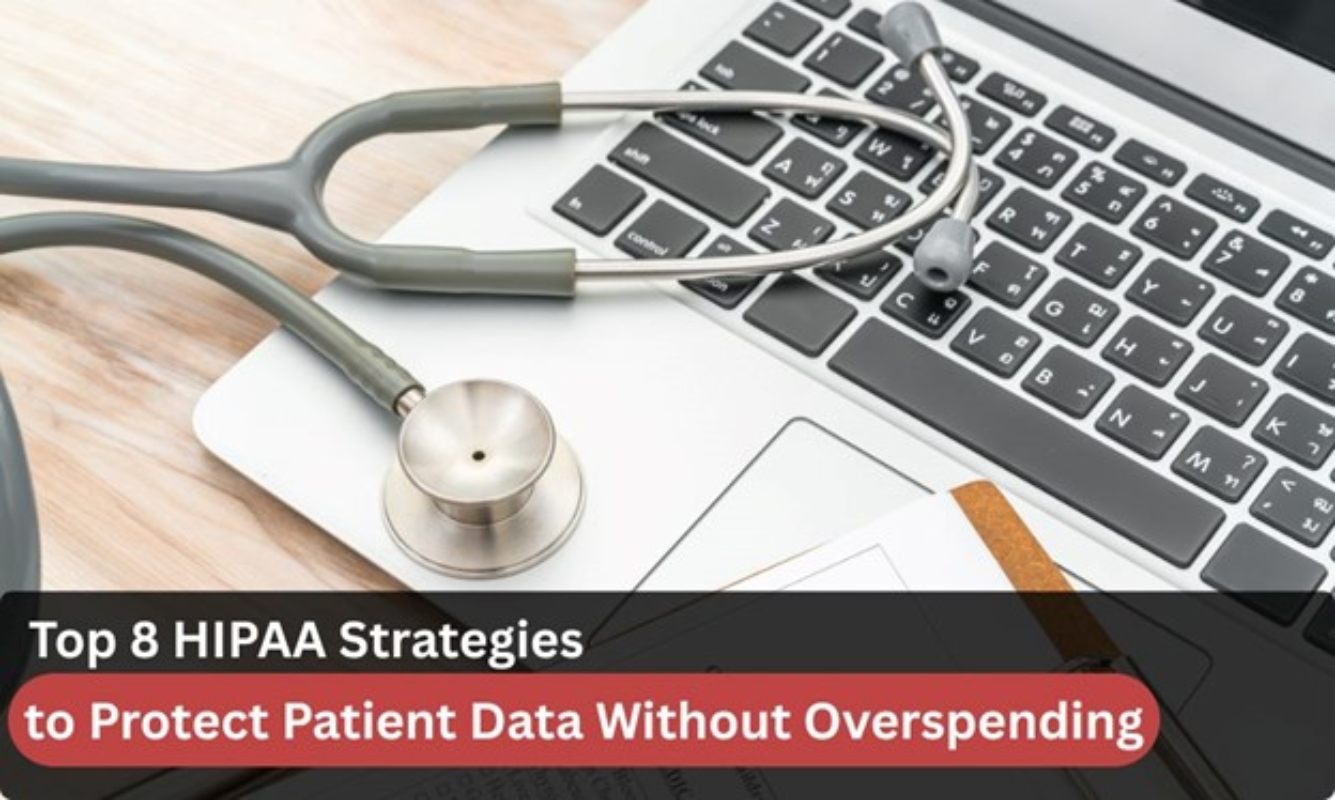We will start with quick overview of HIPAA and then walk through 8 practical, cost effective ways to keep your patient’s sensitive data secure.
Protecting patient’s information under HIPAA is not just legal requirement anymore it’s serious responsibility for every healthcare provider, vendor, and business associate. But for many small and mid sized organizations, there’s common misconception that HIPAA compliance demands a big budget.
The truth is you can build strong HIPAA data protection strategy with smart planning and the right actions without overspending.
What is HIPAA?
HIPAA (Health Insurance Portability and Accountability) is U.S. federal law enacted in 1996 that mandates the protection and confidential handling of individuals’ health information. It primarily safeguards Protected Health Information (PHI), which includes any data related to a patient’s health status, treatment, or payment for healthcare services that can be linked to an individual.
HIPAA consists of several rules, but the most relevant for data protection are:
- Privacy Rule – Regulates who can access and share PHI.
- Security Rule – Establishes standards for securing electronic PHI (ePHI).
- Breach Notification Rule – Requires covered entities to notify individuals and regulators of PHI breaches.
HIPAA applies to covered entities (healthcare providers, health plans, clearinghouses) and business associates (third-party vendors that handle PHI). Failure to comply can result in financial penalties, legal consequences, and reputational damage.
Now that we know HIPAA, let’s look at how to stay compliant without breaking out.
8 HIPAA Strategies to Protect Patient Data Without Overspending

1. Conduct Basic HIPAA Risk Assessment
HIPAA risk assessment is the cornerstone of any effective compliance program. It does not have to be expensive, especially when done internally with proper guidance. The purpose is to identify where protected health information (PHI) is stored, transmitted, or accessed, and what risks surround that data.
Use publicly available HIPAA risk assessment templates from HHS or reliable nonprofit resources. Document your findings and prioritize the highest-risk areas first.
Tip: Even a simple self assessment gives your organization clear roadmap to improve HIPAA compliance without hiring external consultants.
2. Train Employees with Low-Cost, High-Impact Awareness Programs
Many HIPAA violations happen because of simple human mistakes. Even something as small as sending patient information to the wrong person can cause a data breach. That’s why ongoing HIPAA training is so necessary.
You do not need high end LMS platforms to build awareness. Short, engaging sessions using PowerPoint, videos, or lunch and learning formats can do wonders. Focus on real-world scenarios, such as mishandling medical records, password sharing, device security, and phishing.
Healthcare staff are your first line of defense. Invest time in them, not just tools.
3. Enforce Role Based Access Controls (RBAC)
One of the easiest ways to prevent unauthorized access to PHI is to limit who can access which data.
Implement role based access controls so users only access the information they need for their job role. For example, receptionists should not have access to complete medical histories, and billing staffers do not need to read doctors’ notes.
Using built in settings in EHR systems or cloud platforms can help enforce this without extra tools. It’s not just efficient, it’s also the best HIPAA practice.
4. Encrypt Devices and Communications – Start with the Basics
Encryption might sound like something only enterprise level security teams can manage. But today, even budget tools come with built-in encryption capabilities.
Start by enabling full disk encryption on laptops and mobile devices. Use encrypted email platforms or patient portals for PHI communication. And do not forget about mobile apps assure employees that avoid using unsecured messaging services like SMS or WhatsApp.
5. Establish a Clean Desk and Device Policy
HIPAA data protection does not only live in digital spaces. Physical security is just as important.
Encourage clean desk policy to ensure PHI is not left around on sticky notes, printed forms, or open folders. Lock screens when stepping away from computers, store devices securely, and never leave records in plain view.
Simple posters in each department reminding employees to lock their screens or clear their desks at the end of the day can go a long way.
6. Existing Tools to Leverage Before Buying New Ones
Before shopping for expensive compliance solutions, check what you already have. Most healthcare IT systems, including Microsoft 365, Google Workspace, and common EHR platforms, offer HIPAA-friendly features such as audit trails, access controls, and data loss prevention.
Work with your IT team or vendors to configure these correctly. There’s often no need to switch platforms, just optimize what’s already in place.
Many security analysts have observed that underutilized features in existing tools are among the most significant missed opportunities in small healthcare setups. It’s not about buying more; it’s about using efficiently.
7. Create an Incident Response (IR) Plan – Even for a Simple One
HIPAA requires swift response to breaches, but too many small practices wait until it’s too late. Simple, one page IRP can save you time, fines, and reputational damage.
Outline what happens if PHI is lost, stolen, or accessed inappropriately. Define roles (Who’s responsible for reporting? Who notifies affected patients?), document response steps, and regularly test them with tabletop exercises.
Bonus: Having an IR plan ready is often a positive factor during HIPAA audits or investigations.
8. Document Everything (Even Your Budget-Friendly Efforts)
Documentation is your safety net. Write down every policy, training session, access review, encryption setting, or cleanup initiative you implement, even using free or in house solutions. Documenting shows intent, accountability, and alignment with HIPAA “reasonable and appropriate” standard.
This also includes recording why a costly solution was not feasible and what alternative was implemented. Regulators understand that not all providers have the same resources.
To stay on top of evolving regulatory requirements, healthcare providers should regularly review the latest HIPAA updates and guidance from HHS.
Final Thoughts: Compliance Is Not About How Much You Spend
HIPAA compliance is often seen as a cost center, but that perception changes. Healthcare organizations are learning that proactive data protection does not always require huge budgets. It requires awareness, accountability, and strong foundation of security hygiene.
By focusing on people, processes, and innovative use of technology, you can reduce security risks while staying cost effective. Whether you are small clinic or growing telehealth platform, these strategies can help you stay secure and compliant without overspending.
Read Also:
- 6 Key Tips For Building a Thriving Medical Practice
- How Digitalization is Changing the Face of Healthcare?
- The Future of Non-Medical Home Health Care: Predictions and Trends
AUTHOR BIO

Nikhil Raj Singh is an IT expert specializing in cybersecurity, cloud services, and digital transformation. As part of the team at Ampcus Cyber, he brings extensive experience in strengthening security frameworks and driving innovative projects. Nikhil helps organizations navigate digital transformation challenges while ensuring strong, compliant security practices.
















